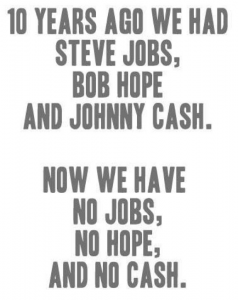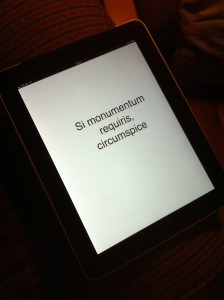On a whim, we went to see Woody Allen’s latest film last night — and enjoyed it immensely. The trailer doesn’t do it justice: it’s clever, witty, subtle and occasionally outrageously funny. And it has a lovely sting in the tail. In some ways, it feels like a return to Allen at the top of his 1970s form. The only thing that’s changed is that instead of Allen himself playing the angst-ridden intellectual who can’t quite manage a full-on relationship with a sexy woman, we have Owen Wilson, broken nose and all, playing that role as Gil Pender, a successful hack screenwriter who really wants to be a great novelist. But here’s the weird thing: Wilson sounds and acts exactly like Allen.
The film also revealed how unobservant I am. At one stage there’s a scene in which the main characters are in the Rodin museum listening to a French guide expounding on the sculptor’s life. As I watched, I thought: there’s something very familiar about that guide. I’m sure I’ve seen her somewhere before. It was only afterwards that I realised she is Carla Bruni, now France’s First Lady. Which left me marvelling at Allen’s cunning: what a way to ensure that filming in Paris is free from hassling by officialdom.
We watched it in a Cambridge cinema with an audience that clearly got the literary jokes: the wonderful send-up of Hemingway (brilliantly played by Corey Stoll), for example. Or the lovely joke about Bunuel in which the Allen figure gives the great director a suggestion for the plot of his most famous film — and Bunuel doesn’t get it! Adrien Brody’s portrayal of Salvador Dali at full throttle is side-splittingly funny. But in some places the film also gets serious things right: for example, the way Kathy Bates captures Gertrude Stein’s rock-solid dependability.
I left, still grinning at the lovely closing twist and making two resolutions: (a) to have a few days in Paris this Autumn; and (b) to read Gertrude Stein.
In his New Yorker review, David Denby describes the film as
a gently rapt fable, caressed with wonderment. Gil is a stumbling contemporary neurotic thrown in among artists with seemingly dauntless strength. It’s his trip, but it’s Allen’s, too—a dream curated by the fan of great musicians and writers, the culture-mad student, always renewing the pantheon.
He’s right. My verdict: unmissable.





